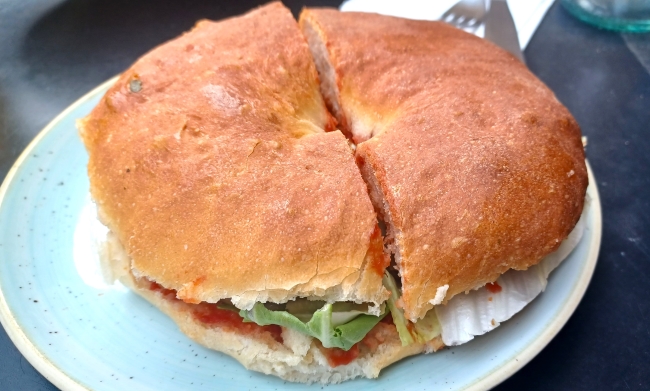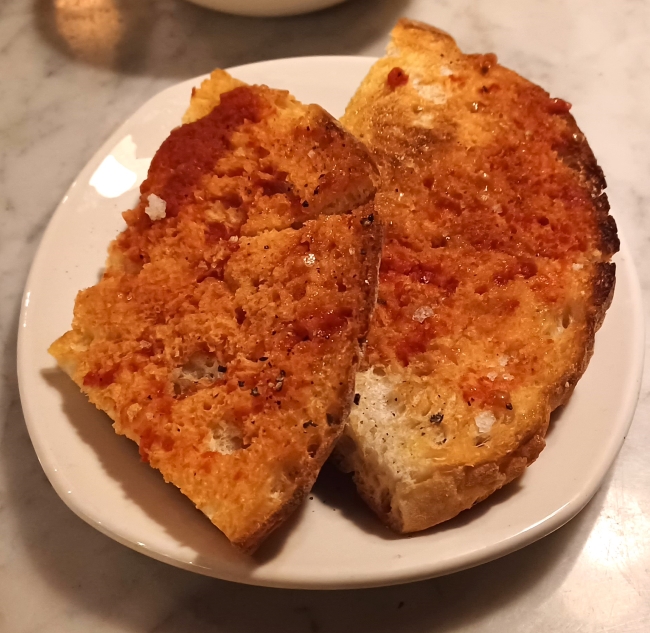Malta may be one of the smallest countries in the European Union (122 square miles, half the size of Chicago), but these limestone rocks have a history packed with war, foreign invasion, and brave defensive stands. All that and delicious, unique local food and drinks!
Foodie Malta
Ftira
Malta’s incredible sourdough bread, Ftira, is traditionally made in a ring shape. Both Ftira and Tal-malti (Malta’s other bread staple) are made using the same ingredients: flour, yeast, water and salt. But Ftira is different in that it is baked in a wood fired oven at very hot temperatures. That means the loaf is done in just 20 minutes.
Sometimes, you’ll see Ftira baked into a large ring shape. But, these days, it often starts with a hole in the middle, but when the dough rises and the baking is complete, the hole is just a little dot in the middle of the bun. The high baking temperature means that the Ftira is flatter than most breads and has an open crumb.

Ftira is often served like a sandwich, filled with tuna, capers, and mint. But, the possibilities are endless. I like a stuffed sandwich with broad beans and veggies, but ftira cut lengthwise and topped with just crushed tomatoes is delightful as well.

In 2020, Malta’s ftiria was added to Representative List of the Intangible Cultural Heritage of Humanity.
Gozitan Ftira
On the island of Gozo, Ftira Għawdxija (Ftira from Gozo) is more like a pizza. Baked in a wood fired oven and served with various toppings like anchovies or potato and cheese.
